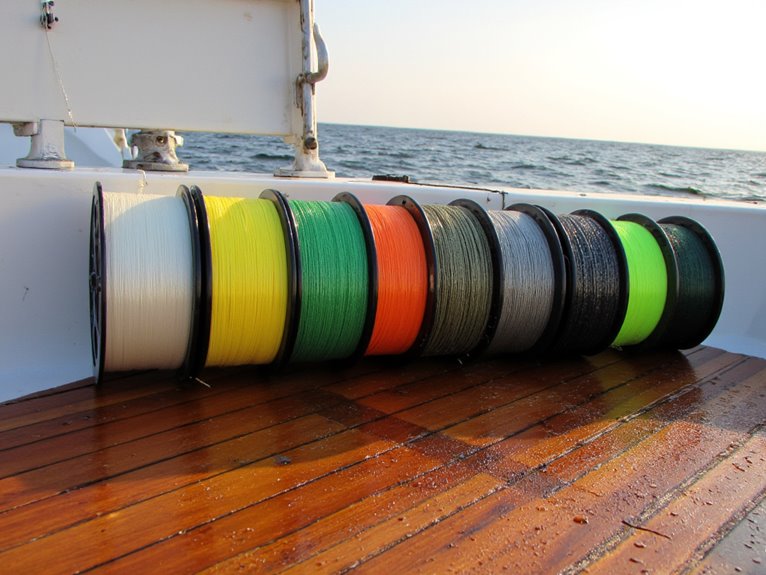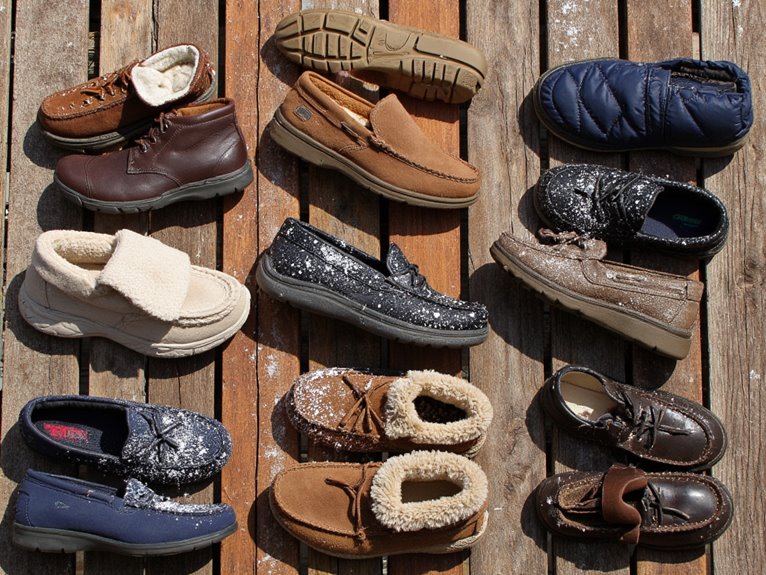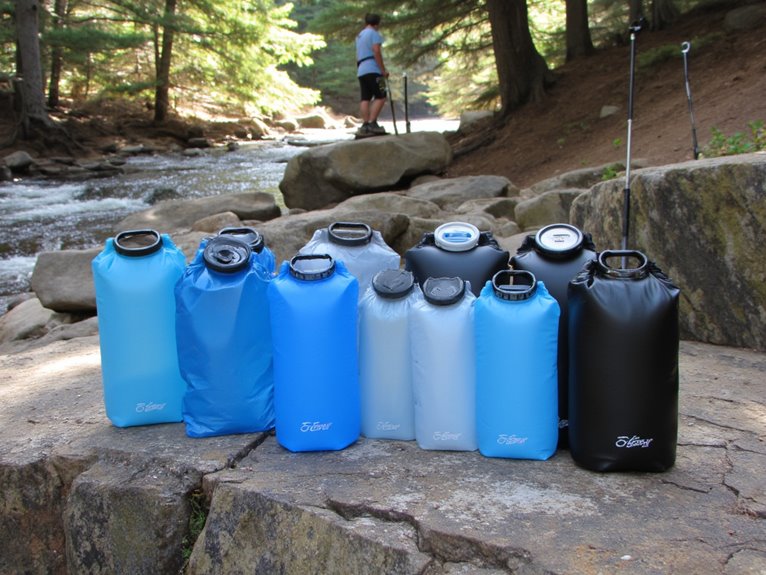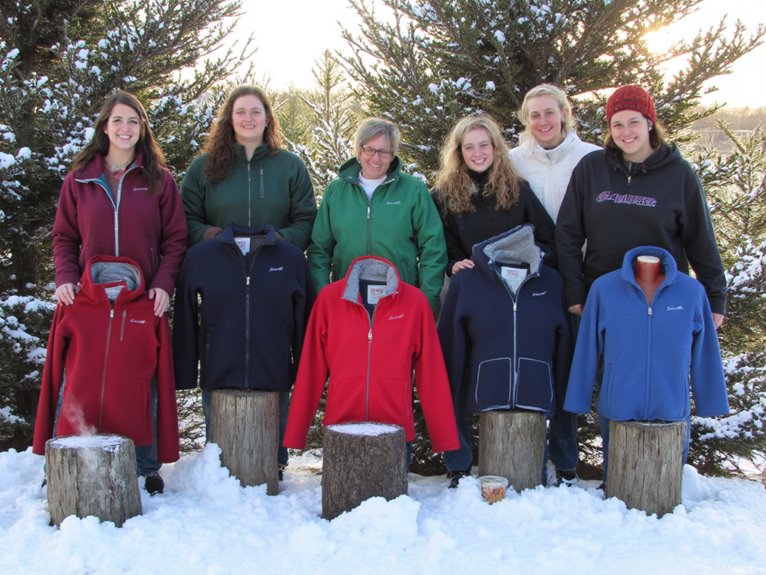How Much Can You Fit in a 60L Backpack?
A 60-liter backpack offers ample storage space for extended trips, allowing you to pack a wide range of gear and accessories. Strategic packing enables you to fit clothing for multiple seasons, shelter and sleep gear, cooking equipment, electronics, and personal hygiene items. By utilizing packing hacks like rolling clothing and compressing gear, you can maximize space and reduce weight. With a little practice, you can fit everything you need for an extended adventure into this spacious backpack. As you prepare for your next journey, the key to packing success lies in understanding your backpack's capabilities and learning the art of efficient packing.
We are supported by our audience. When you purchase through links on our site, we may earn an affiliate commission, at no extra cost for you. Learn more. Last update on 15th January 2026 / Images from Amazon Product Advertising API.
Understanding Your 60L Backpack
When venturing into the great outdoors, mastering the art of packing begins with understanding the unique characteristics of your 60L backpack, a crucial step in optimizing your gear-carrying capacity. A 60L backpack offers ample space for extended trips, but it's essential to comprehend its dimensions, compartmentalization, and features to pack efficiently. With a capacity of 60 liters, this backpack provides ample room for clothing, gear, and accessories. Measure your backpack's length, width, and height to visualize its interior space. Identify the various compartments, pockets, and straps, and consider the weight distribution and balance of your pack. By understanding your 60L backpack's characteristics, you'll be able to pack strategically, ensuring a comfortable and enjoyable journey.
Essential Items for Extended Travel
For extended travel, five essential categories of items are crucial to pack in your 60L backpack: clothing, shelter and sleep gear, cooking and nutrition equipment, first aid and hygiene supplies, and miscellaneous tools and accessories. These categories will provide a solid foundation for your travels, ensuring you're prepared for various situations. Shelter and sleep gear may include a tent, sleeping bag, and sleeping pad. Cooking and nutrition equipment could comprise a portable stove, cooking pot, and utensils. First aid and hygiene supplies might encompass bandages, antiseptic wipes, and biodegradable soap. Miscellaneous tools and accessories could include a multi-tool, flashlight, and repair kit. By packing these essential items, you'll be well-equipped for an extended adventure.
Packing Clothes for Multiple Seasons
When packing for extended travel, it's essential to think about the varying climates and seasons you'll encounter. To maximize space and minimize luggage weight, focus on layering versatile pieces that can be mixed and matched to accommodate different weather conditions. By packing multi-season items, you'll be prepared for any situation, from chilly mornings to sweltering afternoons, without sacrificing valuable backpack real estate.
Layering for Versatility
How can you guarantee that your backpack remains versatile across different climates and seasons, while keeping your packing list concise and efficient? The answer lies in layering for versatility. By packing clothes that can be mixed and matched, you can create multiple outfits for various weather conditions. Focus on neutral-colored, quick-drying, and moisture-wicking fabrics that can be layered to adapt to changing temperatures. A good rule of thumb is to bring three to four tops, two to three bottoms, and one to two outer layers. This will allow you to create a variety of outfits for different seasons and climates, all while keeping your packing list concise and efficient.
Packing Multi-Season Items
By incorporating multi-seasonal items into your packing list, you can guarantee a versatile wardrobe that adapts seamlessly to changing climates and temperatures. This approach allows you to pack smart, not hard, and certifies you're prepared for unexpected weather conditions. Focus on neutral-colored, quick-drying fabrics that can be layered for different seasons. For instance, a lightweight, breathable jacket can be worn on its own in spring and summer, and layered under a heavier coat in winter. In the same way, thermal base layers can be worn solo in milder temperatures and paired with insulating mid-layers in colder conditions. By packing multi-seasonal items, you'll reduce luggage weight, save space, and enjoy a stress-free travel experience.
Toiletries and Personal Hygiene Items
A well-stocked toiletry bag should include a few essentials, such as toothbrush, toothpaste, and any personal medications, to facilitate a comfortable and healthy journey. When packing toiletries, consider multi-use items like biodegradable soap or shampoo bars that can serve as both body wash and shampoo. Don't forget to include any personal hygiene items, such as hand sanitizer, baby wipes, and feminine products. Packing travel-sized toiletries or decanting full-size products into smaller containers can help save space in your backpack. Additionally, consider packing a small first-aid kit with essentials like band-aids, antiseptic wipes, and pain relievers. By packing smart, you can guarantee a clean and healthy adventure without sacrificing precious space in your 60L backpack.
Sleeping Bag and Pad Considerations
Selecting the right sleeping bag and pad is essential for a comfortable and restful night's sleep, as these essentials will be your sanctuary after a long day of hiking. When choosing a sleeping bag, consider the temperature rating, fill power, and compression ability to guarantee it fits in your backpack. A down-filled bag is a great option for its lightweight and compressible features. For sleeping pads, look for inflatable or foam options that provide adequate insulation and comfort. Consider a pad with an R-value of at least 3.5 for colder climates. Remember to pack your sleeping bag and pad in a dry sack or compression bag to save space and keep them dry. By selecting the right sleeping bag and pad, you'll be well-rested and ready for the next day's adventure, and this careful planning will confirm that you're prepared for a good night's sleep.
Camping and Cooking Gear Essentials
When venturing into the great outdoors, having the right camping and cooking gear is vital for a comfortable and enjoyable experience. To guarantee you're well-prepared, it's essential to carefully consider the essentials, from cooking pots and utensils to camping stoves and fuel. By packing the right gear, you'll be able to focus on the adventure ahead, rather than worrying about the basics.
Cooking Essentials Checklist
Your camping culinary experience depends on having the right cooking essentials, as a well-stocked camp kitchen can make all the difference between a mediocre meal and a mouth-watering masterpiece. To guarantee a delightful dining experience, pack the following cooking essentials: a lightweight pot and pan, a utensil set, a cutting board, and a water purification system or water treatment tablets. Don't forget a spatula, tongs, and a camping stove accessory kit. Additionally, bring a set of reusable dishware, a coffee maker or French press, and a cooler for storing perishable items. Organize your camp kitchen by storing gear in a designated area, making meal prep and cleanup a breeze. With these essentials, you'll be well-equipped to whip up a culinary storm in the great outdoors, and this will facilitate a truly enjoyable meal in the wild.
Camping Stove Options
Equip yourself with a reliable camping stove, the cornerstone of any outdoor culinary adventure, as it enables you to prepare hearty meals amidst the wilderness. When choosing a camping stove, consider the type of fuel, cooking style, and weight constraints. Canister stoves, such as the MSR PocketRocket, offer convenience and ease of use. Liquid fuel stoves, like the Coleman Classic, provide a reliable and cost-effective option. Alternatively, consider a wood-burning stove, such as the BioLite CampStove, for a sustainable and eco-friendly choice. Whichever option you choose, verify it's durable, easy to maintain, and suitable for your backpacking needs. With a reliable camping stove, you'll be savoring delicious meals under the stars in no time.
Packing Cooking Gear
Packing the right cooking gear is essential to a successful backpacking trip, as it enables you to prepare nourishing meals that fuel your adventures. When packing cooking gear, prioritize lightweight and compact items that serve multiple purposes. A pot and lid combo, a spork or multi-tool, and a waterproof matches or lighter are must-haves. Consider a portable stove, such as a canister or liquid fuel stove, and don't forget a fuel bottle and pot support. A compact cooking pot with a built-in strainer and a reusable cloth or silicone utensil set can also be valuable additions. By packing wisely, you'll be able to whip up a hearty meal in no time, even in the most remote wilderness.
Electronics and Accessory Storage
A well-designed backpack should have dedicated compartments and pockets to protect and organize electronics and accessories, ensuring they remain safe and within easy reach throughout the journey. A 60L backpack can fit a surprising amount of electronics, including a laptop, tablet, e-reader, and portable power bank. Consider packing a waterproof phone case, camera, and portable charger to keep your devices powered up. Organize cables and adapters using small pouches or cable organizers to prevent tangles and damage. Look for backpacks with built-in laptop sleeves and tablet pockets to keep your devices secure and protected. By strategically packing your electronics, you can stay connected and capture memories on the go.
Footwear and Layering Strategies
As you venture into the wilderness, selecting the right footwear and layering strategies becomes paramount to guarantee a comfortable and safe journey. Footwear is vital, as it can make or break your adventure. Choose sturdy, waterproof hiking boots or trail running shoes with good tread and ankle support. For layering, prioritize moisture-wicking base layers, insulating mid-layers, and waterproof outerwear. This will help regulate body temperature and protect against the elements. Consider packing a spare set of socks, underwear, and a warm hat for added comfort. Don't forget to pack a lightweight, quick-drying towel for drying off after an invigorating river crossing or unexpected rain shower.
First Aid and Emergency Kit
In the unpredictable wilderness, a well-stocked first aid kit and emergency supplies can mean the difference between a minor setback and a full-blown crisis. A 60L backpack should always reserve space for essential medical and emergency items.
Here are three must-haves to include in your kit:
- Bandages and wound care: Assorted band-aids, gauze pads, and antiseptic wipes to treat cuts and scrapes.
- Pain relief and antihistamines: Medications like acetaminophen, ibuprofen, and diphenhydramine to alleviate pain and allergic reactions.
- Emergency shelter and warmth: A lightweight emergency blanket, space blanket, or bivy sack to provide warmth and protection from the elements.
Maximizing Space With Packing Hacks
In terms of maximizing backpack space, every trick counts. By employing clever packing hacks, adventurers can squeeze in those extra essentials without sacrificing comfort or convenience. Roll clothing to save space, and consider utilizing compression bags to help optimize every available inch of your backpack.
Roll Clothing to Save
Rolling your clothing instead of folding it can increase your backpack's storage capacity by up to 20%, making it a simple yet effective packing hack for maximizing space. By rolling your clothes, you can eliminate wrinkles and prevent creases, making it a win-win situation. Here are three benefits of rolling your clothing:
- Reduced wrinkles: Rolling your clothes reduces wrinkles, saving you time and effort on ironing.
- Increased storage: Rolling your clothes allows you to pack more items in your backpack, making the most of your available space.
- Easier packing: Rolling your clothes makes it easier to pack and unpack, as items can be easily stacked and organized.
Compression Bags Help
How can you squeeze even more gear into your backpack without sacrificing comfort or accessibility? Compression bags are the answer. These ingenious bags compress your clothing and gear, allowing you to pack more efficiently. By compressing your items, you can fit more into your backpack while keeping your gear organized and easily accessible. Look for compression bags with waterproof and breathable materials to keep your gear dry and fresh. They're perfect for camping, hiking, or backpacking trips where every inch of space counts. With compression bags, you can fit more into your 60L backpack without compromising on comfort or accessibility.




